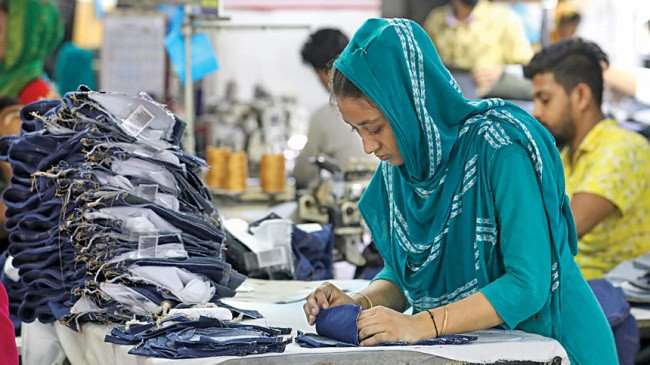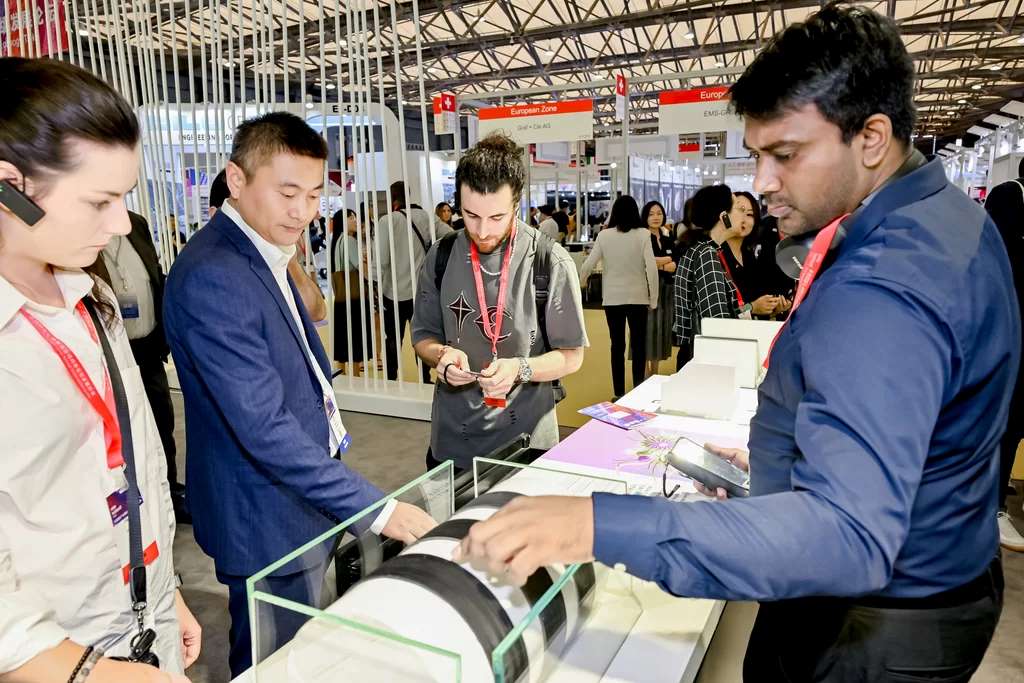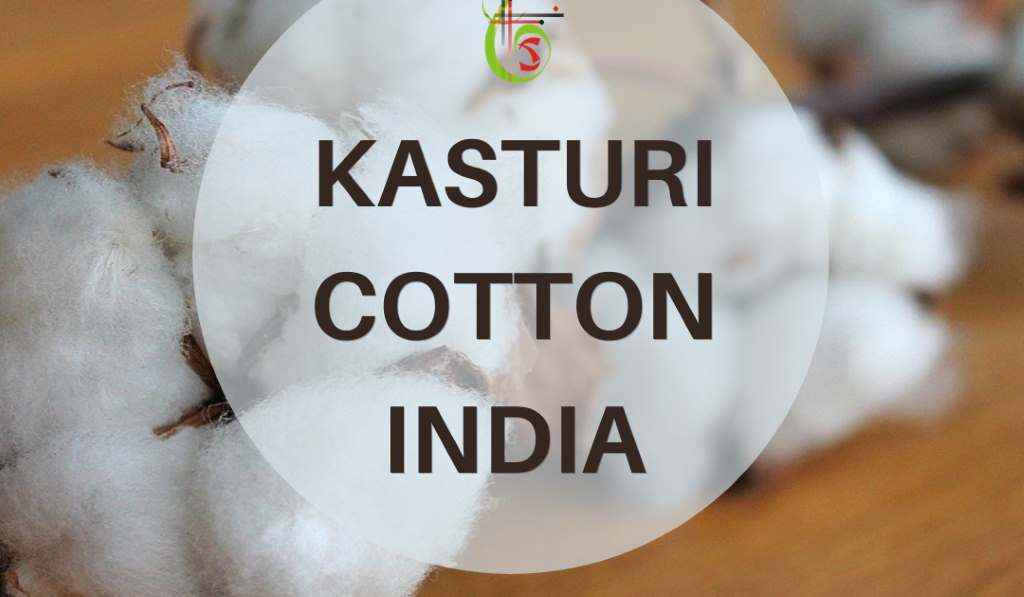FW
For the first time, specialised sports trade show ISPO Munich will be held in collaboration with the Danish fashion show Copenhagen International Fashion Fair (CIFF).
To run from Dec 03-05, in Munich, ISPO Munich will hold a partner stand for CIFF where Danish brands from the denim, sportswear, streetwear and sneaker sectors will showcase their newest collections.
ISPO Munich will also have dedicated hall for showcasing.athleisure, sports fashion and streetwear within the Zeitgeist by ISPO, a fashion-focused section that debuted for last ISPO edition and the ISPO 520M concept area hosting outdoor market novelties.
One of the most important platforms for the international fashion industry, CIFF has evolved from being a regional trade fair into a more international inspiring trade platform that showcases some of the industry’s most future-orientated brands. Since its foundation in 1993, the fair has been dedicated to promoting excellent design, fashion-forward innovation and high-quality fashion at a democratic price point.
The exhibiting CIFF brands from the denim, sportswear, streetwear and sneaker sectors will showcase further innovations and help amplify the importance of ISPO Munich as a global platform for the sports business. In return, CIFF will welcome a selected number of the ISPO Munich partnering brands to present the Danish f/w 2025 Copenhagen Fashion Week for the 64th edition of CIFF.
This year’s ISPO Munich brand portfolio will include participants such as Veja, Amundsen, Haglöfs, Bellroy, Mey, Quartz Co, Sandqvist, We Norwegians, Varsity Headwear, Snowpeak, And Wander, Stereo Skis, Two. One–at the Zeitgeist by ISPO area–and Hoka, Faction, Adidas Terrex, Asics, Columbia + Sorel, Stanley, Dolomite, Zalando and Smart–at Ispo 520M, in addition to the brands selected by CIFF.
Stoll’s Patternshop is set to unveil its revamped online platform by the end of September 2024, boasting an upgraded, user-friendly interface. Known for its innovative pattern programming templates and flat knitting technology solutions, the updated Patternshop aims to streamline access to its extensive resources for customers and registered users.
The revamped platform aims to deliver seamless navigation, providing users with a wide array of pattern programs, yarn data, and insights into flat knitting technology, ultimately enhancing their experience. Michael Handel, Head of Sales & Service, emphasized that the new interface is designed to equip users with essential tools for success in knitting technology by making these resources more accessible and engaging.
In addition to the interface overhaul, Stoll is expanding its pattern program offerings. The updated Patternshop will feature around 150 pattern programs for Create Plus, the latest pattern programming system from Stoll and KM.ON, along with free-of-charge patterns from Fashion & Technology’s trend collections and other sample patterns.
Users may need to re-register to access the full range of features and resources available on the redesigned platform. Michael Handel emphasized that Stoll is committed to supporting users through this transition and encourages re-registration to take full advantage of the enhanced capabilities.
Having risen by 7 per cent from 116 million tons in 2022 to 124 million tons in 2023, the global fiber production is slated to grow to 160 million tons by 2030, according to the Materials Market Report by Textile Exchange.
The report indicates a continued reliance on new virgin fossil-based synthetic materials, as their market share grew in 2023, while the shares of cotton and recycled fibers saw a slight decline. It highlights the current limitations of textile-to-textile recycling, emphasising an urgent need for innovative solutions, given that most recycled polyester still originates from PET bottles.
On a positive note, the report reveals a growing demand for responsible animal fibers, supported by initiatives like the Responsible Mohair Standard (RMS) and Responsible Alpaca Standard (RAS). These programs aim to improve animal welfare and environmental management, showcasing the potential of such farm-level standards to enhance market recognition of sustainable practices.
Jeanologia has joined the Open Lab initiative, spearheaded by the Hong Kong Research Institute of Textiles and Apparel (HKRITA) and the H&M Foundation, to drive textile innovation and address climate change challenges. The lab, located in Hong Kong’s Advanced Manufacturing Centre, spans 1,800 square meters and focuses on developing sustainable textile solutions. It will host over 80 projects, serving as a hub for brands, manufacturers, and suppliers to collaborate on scalable technologies that promote circularity and efficiency in the textile industry.
Jeanologia will support the advancement of the Green Machine project by contributing its technology, in line with HKRITA’s commitment to sustainability. CEO Enrique Silla highlighted the collaborative aspect of the initiative, noting that the Open Lab brings together brands, manufacturers, and suppliers to foster innovation and drive the industry towards a more circular and efficient textile future.
Key technologies introduced by Jeanologia include the H2 Zero water recovery system, which enables water reuse without chemicals and reduces energy consumption. The eco-efficient Smart Box washing line and e-Flow technology, which uses nanobubbles to apply chemicals with minimal water, also feature prominently. Additionally, G2 technology uses ozone to create worn finishes on garments without emissions.
Funded by Hong Kong’s Innovation and Technology Commission and housed at Hong Kong Polytechnic University, the Open Lab aims to become a global leader in sustainable textile R&D. Its Pilot Plant, an industrial-scale recycling line, will showcase the Green Machine 2.0, capable of recycling up to one ton of polyester-cotton blended textiles daily. The lab is set to be fully operational by the end of 2024.

ITMA ASIA + CITME 2024, taking place in Shanghai from October 14-18, members of TMAS, the Swedish textile machinery association, will unveil advanced technologies aimed at aiding regional manufacturers in producing sustainable fabrics. These innovations come in response to increasing market demands for sustainable textile solutions and reflect TMAS's commitment to supporting the industry's environmental goals.
China, the world's largest textile producer, accounts for over 50 per cent of global fibre consumption, and its synthetic fibre sector produces more than 70 per cent of the world's output. With growing emphasis on sustainability, leading brands now require higher percentages of recycled fibres in their yarns. This shift towards sustainable materials has opened new opportunities for Chinese mills, traditionally focused on achieving cost-effective production rather than sustainability.
New market potential for recycled yarns
Chinese cotton spinning companies have long processed yarn mill waste using rotor spinning technology, which is best suited for recycled yarns with high short-fibre content, according to TMAS Secretary General Therese Premler-Andersson. Previously, this practice was primarily driven by cost considerations. Now, however, these mills can command a premium for yarns containing higher recycled content, aligning with the industry's shift towards sustainability goals.
Since 2015, China has installed nearly four million new rotor spinning spindles, highlighting the substantial potential for growth in this sector. This rapid development necessitates upgrades in technology not just in spinning but throughout the production chain, a challenge TMAS members are prepared to meet.
Eltex’s ACT-R: Enhancing weaving with recycled yarns
Eltex, a TMAS member, addresses the challenges of weaving with recycled yarns through its ACT-R technology. This stand-alone device maintains consistent weft yarn tension on rapier weaving machines, essential for handling the irregularities common in recycled yarns.
Recycled yarns typically contain shorter fibres, which can result in inconsistencies and breakages. Eltex Senior Sales Engineer Daniel Sauret explains that the ACT-R system automatically adjusts for variations in weft yarn tension, ensuring smooth weaving regardless of the condition of the yarn package.
The ACT-R system is a plug-and-play solution compatible with any rapier machine and requires no communication with the weaving machine. Eltex CEO Brian Hicks notes that weavers using recycled yarns have reported outstanding results, highlighting significant improvements in production quality and continuity.
Eltex is celebrating its 60th anniversary this year, marking six decades of pioneering electronic sensor technology for the weaving industry. Its innovations have been crucial in enabling the high-speed, fault-free production seen today.
Vandewiele’s advanced weaving control systems
Vandewiele Sweden AB, part of the Vandewiele Group, also focuses on advanced weaving control. The company will showcase its latest X4 yarn feeders, featuring integrated tension control and machine learning AI capabilities, at ITMA ASIA + CITME 2024. The X4 feeders, available in three versions, enable precise tension control and adjustment, optimizing the weaving process for better fabric quality and reduced waste.
The X4 feeders, equipped with integrated tension display and active tension control, set a new standard for efficiency in weaving, according to a Vandewiele spokesperson. These systems offer significant advantages, particularly in handling recycled yarns, by maintaining consistent tension throughout the weaving cycle.
Baldwin’s TexCoat G4 for efficient finishing
Baldwin, another TMAS member, is transforming the textile finishing process with its TexCoat G4 unit. This technology significantly reduces water, chemical, and energy consumption by applying treatments such as softeners and durable water repellents only where needed.
Rick Stanford, Baldwin’s Vice-President of Business Development for Textiles, states that the system can reduce water, chemical, and energy consumption by up to 50 percent compared to traditional methods. Baldwin's partnership with Monforts and Archroma focuses on improving efficiency and sustainability in dyeing and finishing processes.
A TexCoat G4 unit is currently being installed at Monforts’ Advanced Technology Centre in Germany for extensive industrial-scale trials. Rick Stanford notes that this partnership is set to bring transformative change to the dyeing and finishing sector, enhancing productivity and quality while reducing resource consumption.
Showcasing Swedish innovations for a sustainable future
Therese Premler-Andersson expresses enthusiasm about reconnecting with customers in Shanghai and presenting Swedish innovations that benefit both clients and the environment.
By focusing on cutting-edge technologies for sustainable textile production, TMAS members are set to play a pivotal role in the industry's ongoing transformation towards more eco-friendly practices.
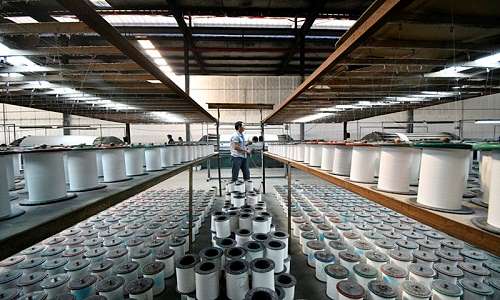
The Regional Comprehensive Economic Partnership (RCEP), the world's largest free trade agreement, is weaving a new narrative for the textile and apparel industry in member nations. A recent study, published in the journal PLOS ONE, reveals the transformative power of RCEP, stimulating trade, fostering innovation, and driving industrial integration in the textile sector.
Trade dynamics and China's dominance
The findings reveal a significant growth in textile trade among RCEP member countries since the agreement's implementation. And China has emerged as a dominant player, witnessing substantial growth in textile exports to RCEP nations, particularly because of tariff reduction initiatives. China's textile and clothing exports to RCEP countries grew to $95.02 billion, a 9.3 per cent year-on-year increase.
Table: Top 20 countries exporting textiles and garments
|
Rank |
Country/Region |
Export value in 2021 (billion $) |
Export value in 2022 (billion $) |
Year-on-year growth rate |
|
1 |
China |
156.6 |
164.3 |
4.90% |
|
2 |
European Union |
71.5 |
78.6 |
9.90% |
|
3 |
Bangladesh |
42.6 |
46.8 |
9.90% |
|
4 |
Vietnam |
39.4 |
44.2 |
12.20% |
|
5 |
India |
19.8 |
20.8 |
5.10% |
|
6 |
Turkey |
18.1 |
19.5 |
7.70% |
|
7 |
Pakistan |
17.8 |
19.4 |
9% |
|
8 |
Indonesia |
12.6 |
14.3 |
13.50% |
|
9 |
United States |
10.6 |
11.4 |
7.50% |
|
10 |
Mexico |
9.9 |
10.8 |
9.10% |
|
11 |
Cambodia |
9.4 |
11.3 |
20.20% |
|
12 |
Italy |
9.3 |
10.1 |
8.60% |
|
13 |
Germany |
9.2 |
9.9 |
7.60% |
|
14 |
South Korea |
9.1 |
9.6 |
5.50% |
|
15 |
Spain |
8.6 |
9.3 |
8.10% |
|
16 |
Sri Lanka |
6 |
6.3 |
5% |
|
17 |
Thailand |
5.8 |
6.2 |
6.90% |
|
18 |
Malaysia |
5.7 |
6 |
5.30% |
|
19 |
Myanmar |
5.5 |
5.8 |
5.50% |
|
20 |
Morocco |
4.9 |
5.3 |
8.20% |
The research highlights a case study illustrating the impact of the RCEP on China's textile trade. In 2022, China's total textile and clothing exports to other RCEP member countries reached a staggering $95.02 billion clocking in 9.3 per cent year-on-year increase. Notably, Laos emerged as the export market with the highest growth rate for China's textile exports.
Table: China’s textile and clothing exports to some RCEP countries (2022)
|
Country |
Yarn growth rate |
Textile fabric growth rate |
|
Vietnam |
9.73% |
22.37% |
|
Indonesia |
26.66% |
22.37% |
|
Cambodia |
34% |
5.67% |
|
Philippines |
46% |
- |
|
Myanmar |
40% |
43.05% |
In fact, the RCEP is not only driving trade expansion but also fostering a culture of innovation within the textile industry. The agreement's provisions are stimulating demand for innovation, encouraging collaborative efforts in scientific research and development. The study underscores the RCEP's role in promoting technological innovation within the textile production process. Under the RCEP framework, textile enterprises can readily access advanced production equipment and technologies from other member countries. This access enhances production efficiency and provides a robust foundation for innovation activities.
RCEP's impact in action
The RCEP impact can be seen in trade in the region in many ways. For example, tariff reductions; Japan's immediate tariff reductions to zero for 33.7 per cent of Chinese textile and clothing products demonstrate RCEP's impact on trade dynamics. Though Japan's average annual tariff reduction is gradual, it sets the stage for long-term export growth for China.
The lenient rules of origin under RCEP have facilitated increased yarn and textile fabric exports from China to ASEAN countries. This has enabled optimal resource allocation and enhanced exports to Japan, fostering regional industrial integration. Meanwhile, China's breakthrough in committing to non-service sector investments in a free trade agreement and Japan's opening up of investments in various sectors have created a favorable business environment. This is evident in the 17.68 per cent increase in FDI from Japan to China in 2022, highlighting RCEP's positive impact on investment flows.
Beyond economic gains, the RCEP is also promoting sustainability and ethical practices within the textile industry. The framework encourages the adoption of eco-friendly technologies, harmonizes environmental regulations, and supports fair labor practices.
In conclusion, the RCEP is proving to be a game-changer for the textile and apparel industry in the Asia-Pacific region. It is driving trade expansion, fostering innovation, and promoting industrial integration. As the agreement continues to unfold its impact, the textile industry is poised for further growth and transformation, with China solidifying its position as a global textile powerhouse. While the study acknowledges certain limitations, such as its primary focus on quantitative trade dynamics and the challenge of capturing recent developments due to time constraints, it offers invaluable insights into the transformative power of the RCEP. It sets the stage for future research to explore the agreement's long-term implications and its ripple effects on other industries and regions. The RCEP stands as a testament to the potential of regional cooperation in driving economic growth, innovation, and sustainable development in an increasingly interconnected world.
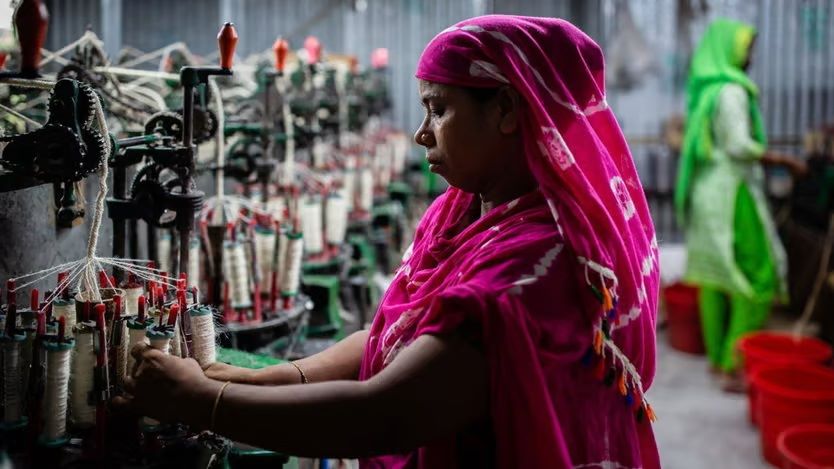
The ongoing political and economic turmoil in Bangladesh has sparked discussions within India's garment industry about the potential for growth and expansion. As Bangladesh grapples with challenges, Indian manufacturers are exploring whether they can leverage the situation to their advantage.
The textile industry in Bangladesh, contributes 80 per cent to the country’s exports and 15 per cent to its GDP. However, the recent political turmoil, culminating in the resignation of Prime Minister Sheikh Hasina, has dealt a significant blow to the sector. Violent protests have disrupted factory operations, resulting in substantial financial losses estimated at $800 million. Compounding these woes is the looming graduation of Bangladesh from least developed country (LDC) status. This transition will lead to the loss of preferential trade privileges, making Bangladeshi apparel products less competitive in key markets like the EU and the US. The increased costs could potentially erode the country's market share and impact its export earnings.
Indian textile zones as potential substitutes
As Bangladesh RMG sector faces a crisis one key area of focus is the potential for Eastern India's coastal regions, along with textile zones in Jharkhand and other states, to emerge as substitute manufacturing hubs. These regions offer advantages such as proximity to ports, a skilled workforce, and existing infrastructure. The industry is debating whether investments in these areas could enable India to capture a larger share of the global garment market.
Also, textile hubs like Tirrupur could gain as global brands shy away from Bangladesh’s due to the ongoing crisis. In fact, Indian units can fill the gaps left by Bangladesh, particularly those with time-sensitive shipments, as logistical bottlenecks have forced many Bangladesh companies to rely on air cargo which is definitely more expensive.
Another focus area is the possibility of some segments of the Bangladeshi garment industry migrating to India. While a full-scale relocation is unlikely, experts suggest that some manufacturers, particularly smaller players, might consider shifting operations to India in search of greater stability and security. This could lead to further growth in India's garment industry, especially in regions like Eastern India.
India currently ranks sixth in global garment exports. The ongoing situation in Bangladesh presents an opportunity for India to move up the ladder. However, experts caution that challenges such as infrastructure limitations, bureaucratic hurdles, and the need for upskilling need to be addressed to fully capitalize on the opportunity. Industry leaders are optimistic about India's potential. As they say, we have the capacity, the skills, and the resources to expand our garment industry significantly. The key is to ensure that India has the right policies and investments in place to support this growth.
Policy support for exporters
To bolster India's apparel industry, the government could implement a range of measures to support exporters. This might include reducing tariffs on raw materials to lower production costs, streamlining export procedures to expedite shipments, and providing tax incentives to encourage firms to expand their operations. Establishing dedicated export processing zones could also offer a more conducive environment for businesses.
Diversify product range and markets
To attract global brands seeking ethically produced goods, India should expand its apparel offerings. This could involve investing in sustainable textiles, organic cotton, and eco-friendly manufacturing processes. Additionally, exploring new markets beyond traditional destinations can help to mitigate risks and capitalize on emerging opportunities.
Collaborating with foreign investors
The political instability in Bangladesh presents an opportunity for India to attract foreign investors seeking alternative locations in South Asia. By encouraging joint ventures and foreign direct investment (FDI), India can leverage this influx of capital to enhance its technological capabilities and secure long-term investments in the apparel industry.
Building a skilled workforce
The increasing adoption of automation poses a challenge to job creation in both Bangladesh and India. To remain competitive, India should prioritize workforce upskilling in modern manufacturing processes. By investing in training and development, India can attract global brands seeking efficient labor solutions and position itself as a preferred destination for apparel manufacturing.
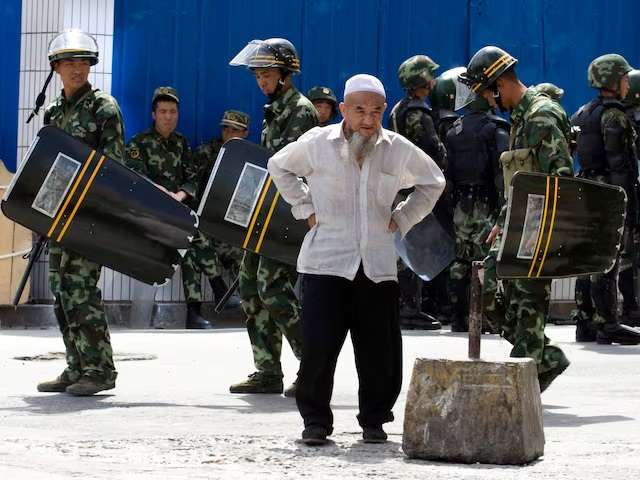
The Chinese Ministry of Commerce announced an investigation into US apparel giant PVH Corp. over alleged discriminatory measures against Xinjiang-related products, particularly the boycotting of cotton sourced from the region. The move signals a potential escalation in trade tensions between the two nations and could have a significant impact on PVH's operations in China.
The Xinjiang region in northwestern China is a major cotton producer, accounting for around 20 per cent of the global supply. However, allegations of forced labor and human rights abuses have led several Western companies, including PVH, to pledge avoiding sourcing cotton from Xinjiang. China has vehemently denied these accusations and has responded with retaliatory measures against companies deemed to be boycotting Xinjiang products.
Impact on PVH’s China business
PVH Corp., the parent company of brands such as Calvin Klein and Tommy Hilfiger, has a significant presence in China. As per the company's 2022 annual report, China accounted for around 7 per cent of its total revenue, making it one of its key markets. In 2022, PVH's revenue in China was estimated to be around $630 million. The company operates numerous stores across China and also sells its products through various online platforms.
If the investigation finds PVH Corp. guilty of discriminatory practices, the company could face severe repercussions in China. This could include fines, restrictions on its operations, or even a complete ban on its products. Such actions could significantly impact PVH Corp.'s revenue and profitability, potentially leading to job losses and store closures.
Implications for US brands sourcing from China
This investigation sends a clear message to other US brands that source from China that any actions perceived as discriminatory against c-related products could result in similar scrutiny and potential penalties. This could force companies to reconsider their sourcing practices and supply chains, potentially leading to a shift away from China.
The investigation also highlights the risks associated with doing business in China for US brands. Companies that rely heavily on the Chinese market could find themselves in a vulnerable position, particularly if they are perceived as taking a stance on sensitive political issues. This could lead to consumer boycotts and damage to their brand reputation.
US-China textile and apparel business
The textile, apparel, and fashion industry is a significant component of US-China trade. In 2023, the US imported approximately $25 billion worth of apparel and textiles from China, while exporting around $5 billion worth of these products to China. The fashion industry, including luxury brands, is also a major contributor to bilateral trade.
The investigation into PVH highlights the complex and often fraught nature of US-China trade relations, particularly in industries that are sensitive to political and social issues. As tensions between the two countries continue to simmer, businesses operating in this space will need to navigate carefully to avoid becoming entangled in geopolitical disputes.
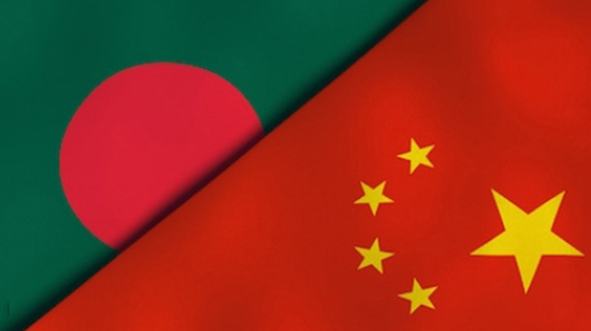
In a landmark development, Bangladesh has been granted 100 per cent duty-free access to the Chinese market for all products, from December 1, 2024. The landmark agreement, secured during Prime Minister Sheikh Hasina's visit to Beijing, announced now by the Chinese government as part of its commitment to Least Developed Countries (LDCs), is expected to have a transformative impact on Bangladesh's textile and apparel industry, the country's economic backbone.
As per Ahsan H Mansur, Executive Director, Policy Research Institute of Bangladesh, this is a game-changer for Bangladesh's textile and apparel industry. It has the potential to transform the sector and accelerate the country's economic development. However, it is crucial for the industry to focus on quality, compliance, and value addition to sustain its competitive edge in the Chinese market.
Sectoral significance
The textile and apparel industry accounts for over 80 per cent of Bangladesh's total exports. The duty-free access to China, the world's second-largest economy, opens massive market with immense potential for growth. Moreover China, the world's largest apparel consumer, presents a lucrative opportunity for Bangladesh's textile and apparel sector. Tariffs removal on all Bangladeshi products is expected to significantly boost exports to China.
Table: Bangladesh-China apparel trade
|
Metric |
Value |
|
Bangladesh's RMG Exports |
$46.8 billion (FY23) |
|
RMG Exports to China |
$676 million (FY23) |
|
China's Apparel Imports |
$120 billion (2023) |
|
Bangladesh's GDP |
$416 billion (2022) |
|
Textile & Apparel Share |
11% of GDP |
|
Employment in the Sector |
Over 4 million people |
With this move experts anticipate a significant rise in exports to China, with estimations of 20 to 50 per cent growth in coming years. And tariff removal will make Bangladeshi products more price-competitive in the Chinese market, enabling them to compete effectively with other major exporters like Vietnam and Cambodia. Duty-free access will also encourage Bangladeshi manufacturers to diversify their product range and explore new segments within the Chinese market. Also, increased demand from China is likely to attract further investments in the textile and apparel sector, leading to job creation and economic development. As Faruque Hassan, President, Bangladesh Garment Manufacturers and Exporters Association (BGMEA) says "This is a momentous occasion for Bangladesh. Duty-free access to China will open up immense opportunities for our industry. We are confident that we can meet the challenges and leverage this access to achieve significant growth."
Compliance, quality still an issue
While the duty-free access presents a major opportunity, Bangladesh's textile and apparel industry needs to address certain challenges to fully capitalize on it. One major factor is compliance and quality. Meeting stringent Chinese quality and compliance standards will be critical to maintain access to the market. Upgrading infrastructure and streamlining logistics will be also be essential to ensure timely and efficient delivery of goods to China. Moreover, moving up the value chain by focusing on high-value and specialized products will help increase profit margins and competitiveness.
Meanwhile, the Bangladeshi government has already taken several steps to support the textile and apparel industry in leveraging this opportunity.
It is investing in skill development programs to enhance the workforce's capabilities. Infrastructure investments have also got a push with the ports, roads and transportation networks being upgraded to facilitate trade. Custom procedures and bureaucratic hurdles are also being streamlined.
Indeed Bangladesh's duty-free access to China marks a significant turning point for the nation's textile and apparel industry. While challenges remain, the potential rewards are substantial. With strategic planning and focused execution, Bangladesh can capitalize on this opportunity to expand its market reach, boost exports, and strengthen its position as a global apparel powerhouse.
Eknath Shinde, Chief Minister, Government of Maharashtra, unveiled the he ‘E-Textile’ system at the Sahyadri Guest House. Designed to enhance the textile sector, the system streamlines and automates processes across various schemes within the textile department, providing easy access to informaton for seamless commercial transactions.
Developed by the ICICI Bank, the system was launched at an event attended by key figures, including Chandrakant Patil, Minister of Textiles; Sujata Saunik, Chief Secretary and Virendra Singh, Secretary of the Textiles Department, along with other relevant authorities.
During the announcement, Chief Minister Shinde introduced the state’s new integrated and sustainable textile industry policy, emphasising the need to support small textile businesses and maximise job creation through this initiative.
The event also featured representatives from ICICI Bank, government officials, and Shrikrishna Pawar, Deputy Secretary, Textiles Department.




